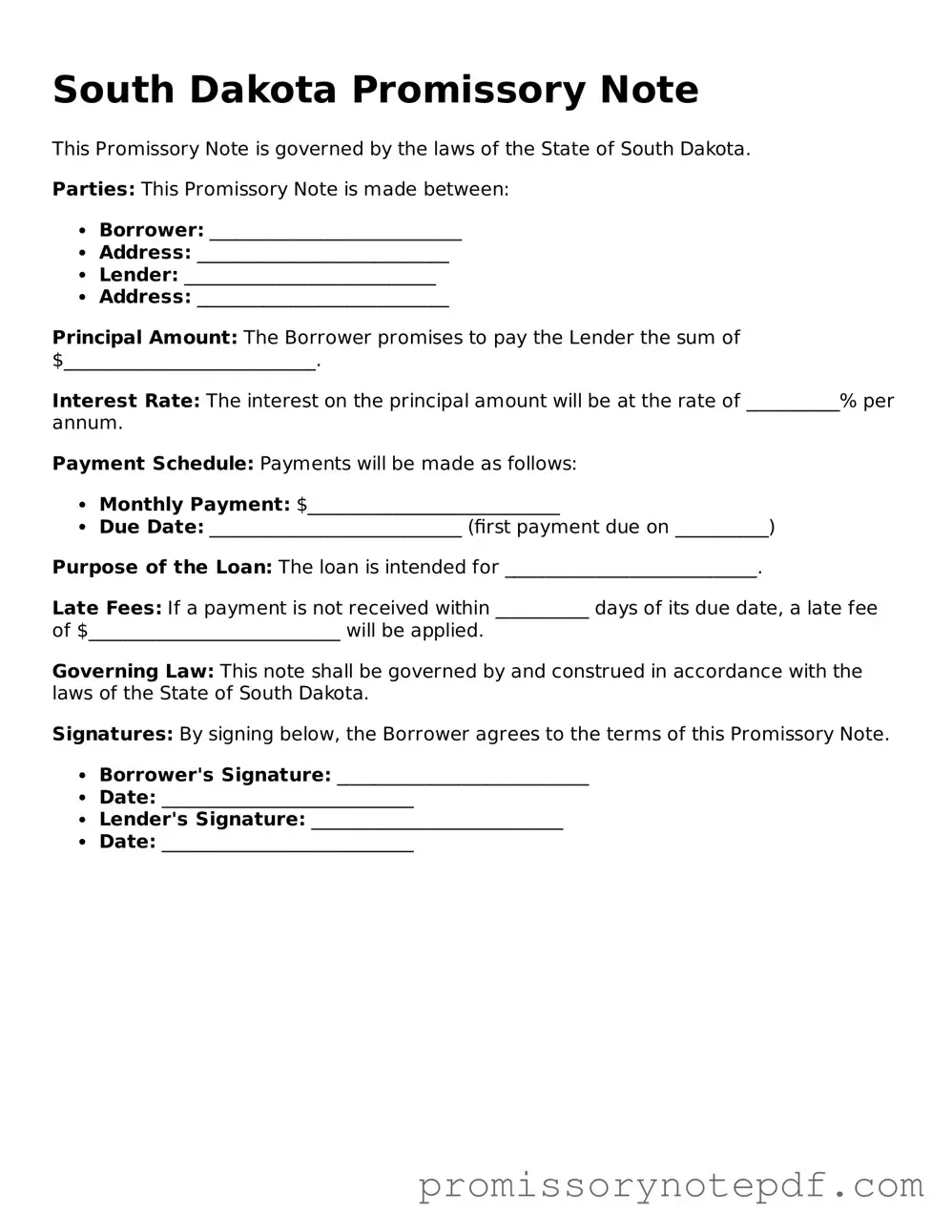The South Dakota Promissory Note form shares similarities with a Loan Agreement. Both documents outline the terms of a loan, including the amount borrowed, interest rates, and repayment schedules. A Loan Agreement typically provides more detailed provisions regarding the rights and responsibilities of both the lender and borrower, while a Promissory Note is more straightforward, focusing primarily on the borrower's promise to repay the loan. Both documents serve to protect the lender's interests while ensuring that the borrower understands their obligations.
A Security Agreement is another document akin to the South Dakota Promissory Note. This agreement establishes collateral for a loan, giving the lender a claim to specific assets if the borrower defaults. While the Promissory Note is a promise to pay, the Security Agreement provides additional security for the lender by specifying what assets are tied to the loan. Together, they create a comprehensive framework for the lending arrangement.
The South Dakota Promissory Note is also similar to an Installment Agreement. Both documents outline a payment plan for repaying a debt over time. An Installment Agreement typically details the specific payment amounts and due dates, while a Promissory Note emphasizes the borrower's commitment to repay the total loan amount. Each document serves to clarify expectations and obligations for both parties.
A Deed of Trust shares characteristics with the South Dakota Promissory Note as well. This document involves real property and serves as a security instrument for a loan. While the Promissory Note focuses on the borrower's promise to repay, the Deed of Trust secures that promise with the property itself. Both documents work together to protect the lender’s interests in real estate transactions.
The South Dakota Promissory Note is also comparable to a Mortgage. A Mortgage is a specific type of loan secured by real estate. Like a Promissory Note, it outlines the borrower's obligation to repay the loan. However, a Mortgage includes additional details about the property and the legal rights of the lender in case of default. Both documents are essential in real estate financing, ensuring clarity in the lending process.
An IOU (I Owe You) is another document that resembles the South Dakota Promissory Note. An IOU is a simple acknowledgment of a debt, indicating that one party owes money to another. While an IOU is less formal and may lack specific terms, it serves a similar purpose by documenting the borrower's obligation to repay. The Promissory Note, however, provides a more structured and legally enforceable promise.
A Letter of Credit can also be compared to the South Dakota Promissory Note. A Letter of Credit is a financial document issued by a bank guaranteeing payment to a seller on behalf of a buyer. While it serves a different purpose in facilitating transactions, both documents establish a commitment to pay. The Promissory Note focuses on personal loans, whereas a Letter of Credit is often used in commercial transactions.
Finally, a Payment Plan Agreement shares some similarities with the South Dakota Promissory Note. This document outlines the terms for repaying a debt in installments. While a Payment Plan Agreement may include specific conditions and consequences for missed payments, the Promissory Note emphasizes the borrower's promise to repay the total amount owed. Both documents aim to provide clarity and structure to the repayment process.
